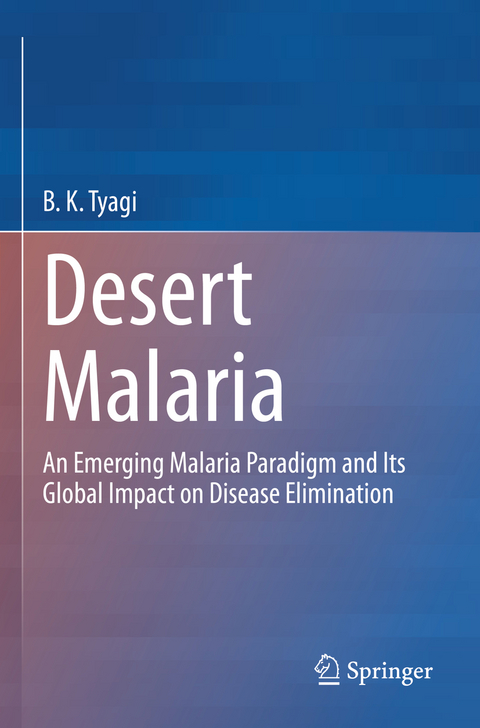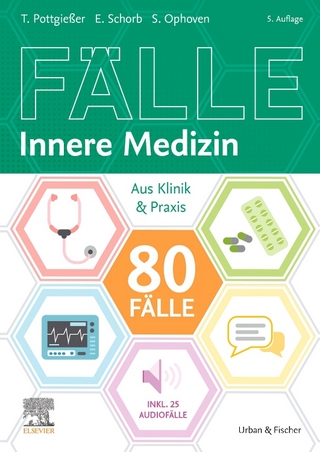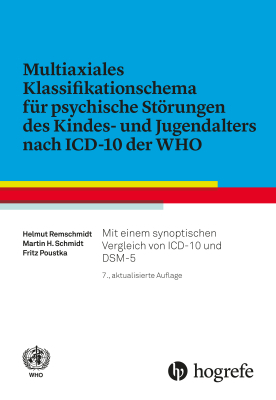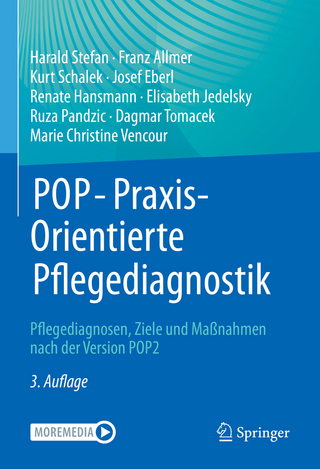
Desert Malaria
Springer Verlag, Singapore
978-981-19-7695-7 (ISBN)
Professor Dr Brij Kishore Tyagi is presently serving as an Advisor to SpoRIC, VIT University, Vellore, TN, India and a tenured International Consultant for Biotech Consortium India Limited on a FAO—Sri Lanka Biosafety Project. During his highly prolific career in the Indian Council of Medical Research, spanning over 35 years, he investigated on malaria in several hyperendemic states like Odisha and Gujarat as well as the inhospitable environments of The Great Indian Thar Desert in Rajasthan. Following his emeritation from the Government of India’s ICMR-Centre for Research in Medical Entomology, Madurai as the Scientist “G” (Director) & Director in-Charge, he was first appointed as a Visiting Fellow at the Department of Biotechnology & Environmental Science, Bharathidasan University, Tiruchirappalli, TN in 2015, and later as a Visiting Professor at the university in 2016. He further took up Visiting Professorship at the Department of Zoology & Environmental Sciences, Punjabi University, Patiala, Punjab for two years (2017-18) and was teaching PG students on medical entomology, parasitology and vector-borne diseases. He has been also serving inter alia as a Core Faculty of the DST-SERB School of Insect Biology at Hyderabad University, Hyderabad and a Guest Faculty, Mohan Lal Sukhadia University, Udaipur. He was the first National Representative in-Charge in India for the International Odonatological Society (1981-1990), and a member in-Charge in South Asia for the Odonata Specialist Group of Species Survival Commission (IUCN) (1985-1995). He is Chief Editor of Journal of Medical Arthropodology & Public Health and editor or member of Editorial/Referee Boards for several international and national journals. He was the Chairman of the Review Committee on Genetic Manipulation (RCGM) of the Department of Biotechnology for the On-Site Inspection Committee for RCT with GM Aedes aegypti at MAHYCO, Jalna, Maharashtra, and an expert member of the Performance Evaluation Team for the National Vector Borne Diseases Control Programme in 2008 and 2013. He is an expert member on various research committees of ICMR, DRDO, DST, DBT-RCGM etc. He is a Fellow of Royal Entomological Society (London), Indian Society of Malaria & Other Communicable Diseases and Society of Medical Arthropodology, and a Member of over a dozen international and national societies. Currently, he is President of (i) the Society of Medical Arthropodology, (ii) the Jodhpur Natural History Society, and (iii) the Indian Dragonfly Society. He won WHO-Tropical Disease Research’s First Prize in a worldwide competition (1995) and Indian Council of Medical Research’s prestigious Dr. M.O.T. Iyengar Memorial Award (2007), besides Bharat Jyoti Award (2013), Lifetime Achievement Award in Medical Arthropodology (DRL Tezpur-CMA, 2013), Bharat Ratna Mother Teresa Gold Medal Award (2015), Bharat Shiksha Ratan Award (2015) etc. Dr. Tyagi has published over 640 scientific articles, and 37 books, including the WHO (2015) training manual, “Biosafety for human health and the environment in the context of the potential use of genetically modified mosquitoes (GMMs): A tool for biosafety training based on courses in Africa, Asia and Latin America, 2008–2011”. He also holds a patent for a ‘mechanical mosquito sampler’ (Indian Patent # 191635) and transferred two technologies to the Health Department, Tamil Nadu in 2010 1nd 2014, respectively. He is credited with the origin of science of medical arthropodology in India, and also the series of annual Medical Arthropodology conferences, commencing 2007. He has provided expert guidance for preparing the OECD’s (Organization for Economic Co-operation and Development) Consensus Document on the dengue/yellow fever vector mosquito, Aedes aegypti Linn. in 2018.
Chapter 1: WORLD MALARIA SITUATION VIS-À-VIS DESERT ECOSYSYEMS
(i) Global malaria scenario
(ii) Asian malaria scenario
(iii) Indian malaria scenario
Chapter 2: DESERTS OF THE WORLD AND RESIDUAL MALARIA SOURCES
(i) Deserts and their malaria history
(ii) Saharan Desert and malaria
(iii) Middle-East Deserts and malaria
(iv) Great Indian Thar Desert and malaria
Chapter 3: ENVIRONMENT OF THE AFRICAN SAHARA AND THE GREAT INDIAN THAR DESERTS
(i) Topography, biota, landscapes, water sources
(ii) Extensive canalization
(iii) Changes in physiographic characteristics
(a) Rise in water table
(b) Rainfall, temperature and humidity
Chapter 4: EXTENSIVE CANALIZATION IN THE AFRICAN SAHARA AND THE GREAT INDIAN THAR
DESERTS
(i) Groundwater quality
(ii) Soil property
(iii) Land irrigability productibility
(iv) Canal sedimentation
(v) Crop pattern
(vi) Demography and human behaviour
(vii) Wetlands and sources of potable water
Chapter 5: ANOPHELINE FAUNA IN THE AFRICAN SAHARA AND THE GREAT INDIAN THAR DESERTS
(i) Classification of Anopheles
(ii) Species Identification and Phylogeny of Anopheles
(iii) Anopheles Species Complexes
(iv) Speciation, plasticity and genetic polymorphism
(v) Diversity Dominant Vector Species
(vi) Distribution of the Dominant Vector Species
Chapter 6: EPIDEMIOLOGY OF MALARIA IN THE AFRICAN SAHARA AND THE GREAT INDIAN THAR
DESERTS
(i) Dynamics of malaria prevalence
(ii) Focal outbreaks of malaria
(iii) Urban malaria
(iv) Quarymine malaria
(v) Border malaria
Chapter 7: EPIDEMICS OF MALARIA IN THE AFRICAN SAHARA AND THE GREAT INDIAN THAR
DESERTS
(i) Evolution of pathways of malaria
(ii) Epidemics and human behaviour
Chapter 8: AGROECONOMICAL AND SOCIAL IMPACTS ON MALARIA IN THE AFRICAN SAHARA AND
THE GREAT INDIAN THAR DESERTS
(i) Health impact of malaria
(ii) KAP in the Desert
(iii) Paradox about rice cultivation in the irrigated desert region and malaria
Chapter 9: MALARIA MANAGEMENT WITH VECTOR CONTROL IN THE AFRICAN SAHARA AND THE
GREAT INDIAN THAR
DESERTS
(i) Environmental control of vectors
(ii) Insecticidal control of vectors
(iii) Biological control of vectors
(iv) Genetic control of vectors
Chapter 10: MALARIA DIAGNOSIS IN THE AFRICAN SAHARA AND THE GREAT INDIAN THAR
DESERTS
Chapter 11: MALARIA IMMUNITY IN DESERT POPULATION IN THE AFRICAN SAHARA AND THE GREAT
INDIAN THAR DESERTS
Chapter 12: MALARIA CONTROL IN THE AFRICAN SAHARA AND THE GREAT INDIAN THAR
DESERTS
(i) Treatment policies
(ii) Antimalarials
(iii) Resistance development in malaria parasites
(iv) Drug pharmacokinetics and delivery
| Erscheinungsdatum | 18.02.2024 |
|---|---|
| Zusatzinfo | 20 Tables, color; 1 Illustrations, black and white; XXI, 416 p. 1 illus. |
| Verlagsort | Singapore |
| Sprache | englisch |
| Maße | 155 x 235 mm |
| Gewicht | 670 g |
| Themenwelt | Medizin / Pharmazie ► Medizinische Fachgebiete ► Mikrobiologie / Infektologie / Reisemedizin |
| Studium ► 2. Studienabschnitt (Klinik) ► Anamnese / Körperliche Untersuchung | |
| Studium ► Querschnittsbereiche ► Epidemiologie / Med. Biometrie | |
| Naturwissenschaften ► Biologie ► Mikrobiologie / Immunologie | |
| Schlagworte | Desert Malaria • Emerging paradigm • Entomology • epidemiology • Parasitology |
| ISBN-10 | 981-19-7695-3 / 9811976953 |
| ISBN-13 | 978-981-19-7695-7 / 9789811976957 |
| Zustand | Neuware |
| Haben Sie eine Frage zum Produkt? |
aus dem Bereich


